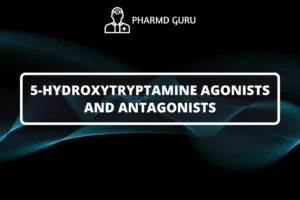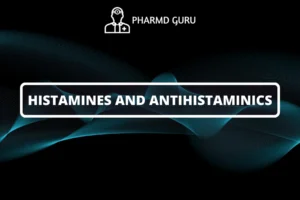Myasthenia gravis is a chronic autoimmune neuromuscular disorder characterized by muscle weakness and fatigue. While there is no cure for this condition, various medications are available to manage its symptoms and improve the quality of life for individuals with myasthenia gravis. In this article, we will provide an overview of the drugs commonly used in the treatment of myasthenia gravis, their mechanisms of action, therapeutic uses, and considerations in their usage.
SCROLL DOWN TO THE BOTTOM OF THIS PAGE FOR ACTUAL NOTES.
TABLE OF CONTENTS:
- Introduction
- Mechanism of Action
- Drugs Used in Myasthenia Gravis
- Cholinesterase Inhibitors
- Immunosuppressants
- Monoclonal Antibodies
- Therapeutic Uses
- Considerations in Usage
Introduction
Myasthenia gravis is caused by the body’s immune system attacking the neuromuscular junction, resulting in a decrease in the number or function of acetylcholine receptors. This leads to muscle weakness and fatigue, particularly in the muscles responsible for movement and breathing.
Mechanism of Action
The drugs used in myasthenia gravis primarily target the underlying immune dysfunction or enhance neuromuscular transmission to alleviate symptoms.
Cholinesterase Inhibitors
Cholinesterase inhibitors, such as pyridostigmine and neostigmine, work by inhibiting the enzyme acetylcholinesterase, which breaks down acetylcholine. By inhibiting this enzyme, cholinesterase inhibitors increase the availability of acetylcholine at the neuromuscular junction, enhancing neuromuscular transmission and improving muscle strength.
Immunosuppressants
Immunosuppressants, such as prednisone, azathioprine, and mycophenolate mofetil, are used to suppress the abnormal immune response in myasthenia gravis. These medications work by modulating the immune system and reducing the production of antibodies that attack the acetylcholine receptors.
Monoclonal Antibodies
Monoclonal antibodies, such as rituximab, target specific immune cells involved in the pathogenesis of myasthenia gravis. These antibodies bind to B cells, which play a role in antibody production, and help reduce the production of harmful autoantibodies.
Drugs Used in Myasthenia Gravis
The following classes of medications are commonly used in the treatment of myasthenia gravis:
- Cholinesterase Inhibitors: Pyridostigmine and neostigmine are commonly prescribed cholinesterase inhibitors that help improve muscle strength by increasing acetylcholine levels at the neuromuscular junction.
- Immunosuppressants: Prednisone, azathioprine, mycophenolate mofetil, and other immunosuppressant drugs are used to suppress the abnormal immune response and reduce the production of autoantibodies.
- Monoclonal Antibodies: Rituximab, a monoclonal antibody, is sometimes used in cases of refractory myasthenia gravis to target B cells and reduce the production of autoantibodies.
Therapeutic Uses
The drugs used in myasthenia gravis have the following therapeutic uses:
- Symptom Management: Cholinesterase inhibitors are primarily used to alleviate muscle weakness and fatigue associated with myasthenia gravis.
- Disease Modification: Immunosuppressants and monoclonal antibodies help modify the underlying immune dysfunction and reduce the production of autoantibodies, potentially slowing disease progression.
Considerations in Usage
When using medications for myasthenia gravis, it is important to consider the following:
- Individualized Treatment: The choice of medication and its dosage may vary depending on the severity of symptoms, response to treatment, and potential side effects.
- Monitoring: Regular monitoring of symptoms, muscle strength, and potential side effects is crucial to adjust medication dosages and optimize treatment outcomes.
- Side Effects and Interactions: Each medication used in myasthenia gravis carries its own set of potential side effects and interactions with other drugs. Healthcare professionals should carefully consider these factors and monitor patients for any adverse reactions.
ACTUAL NOTES:




